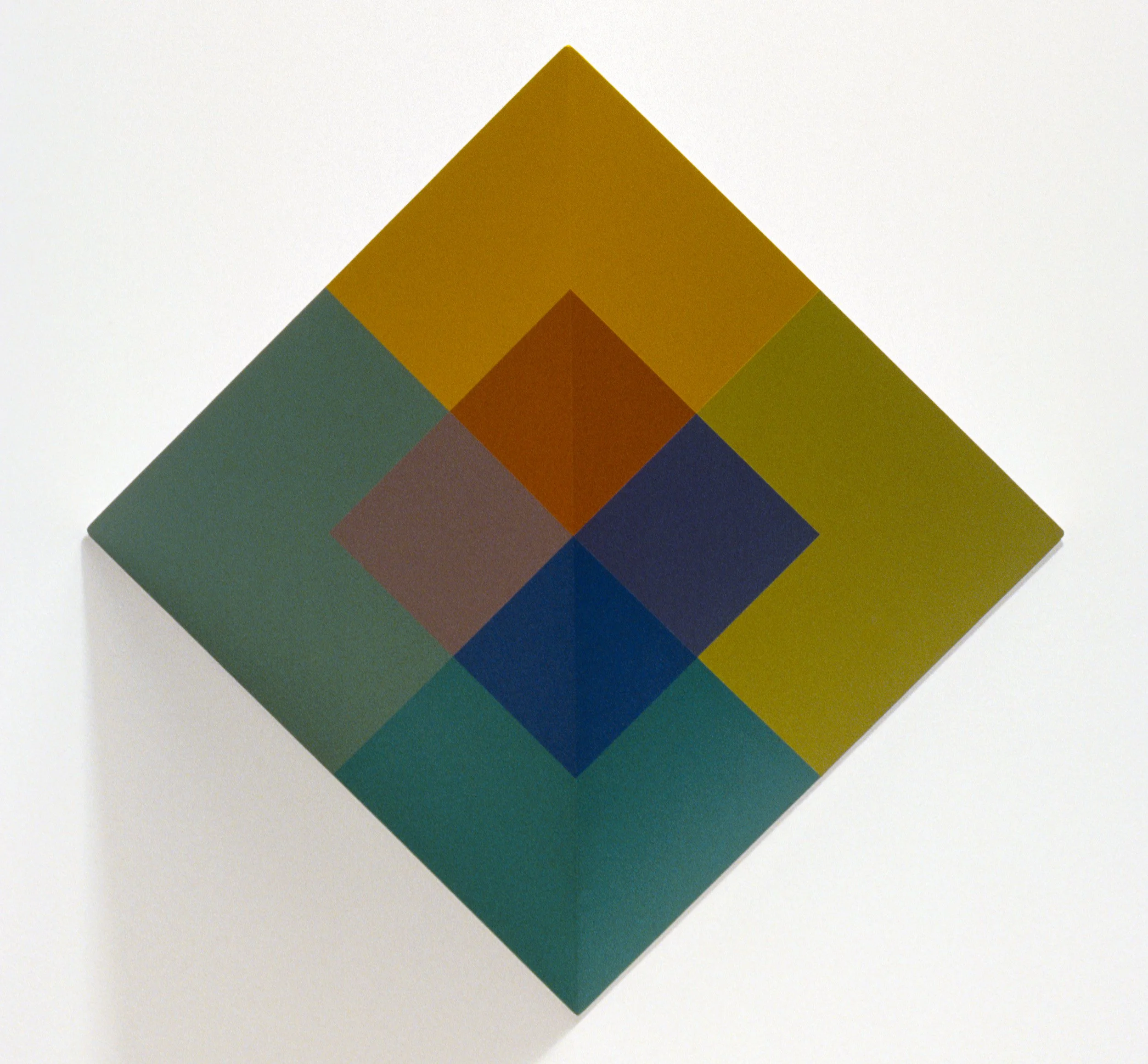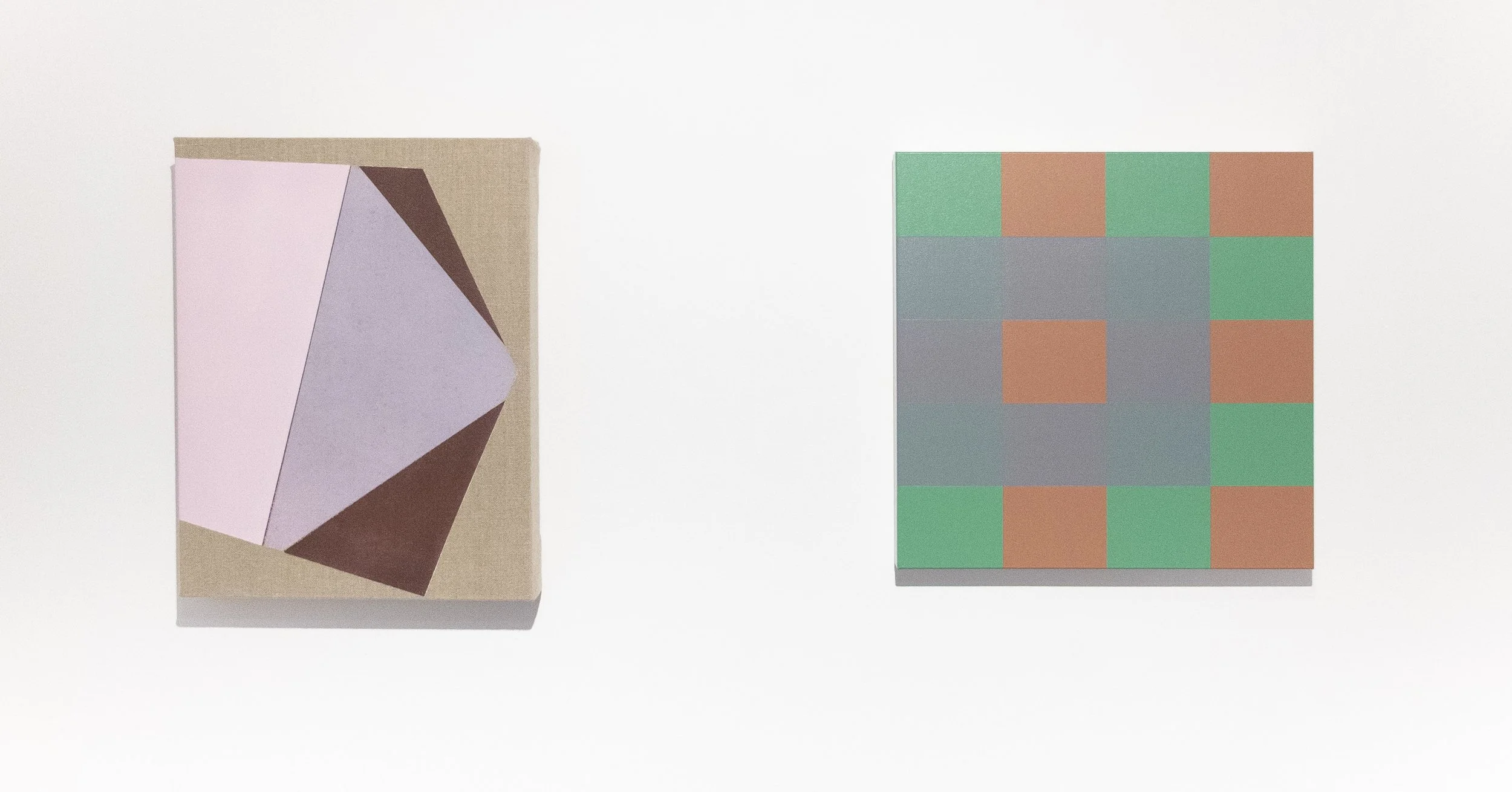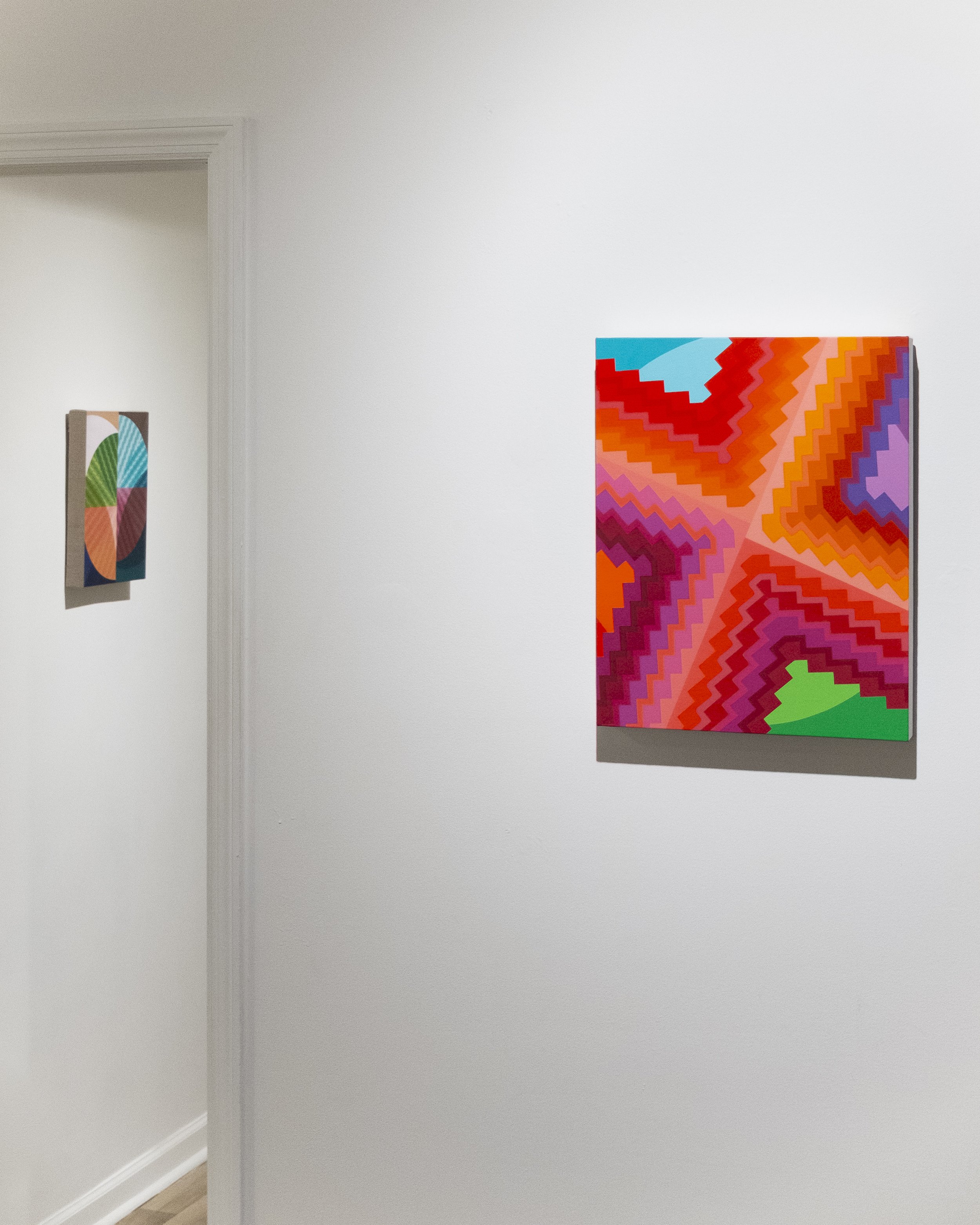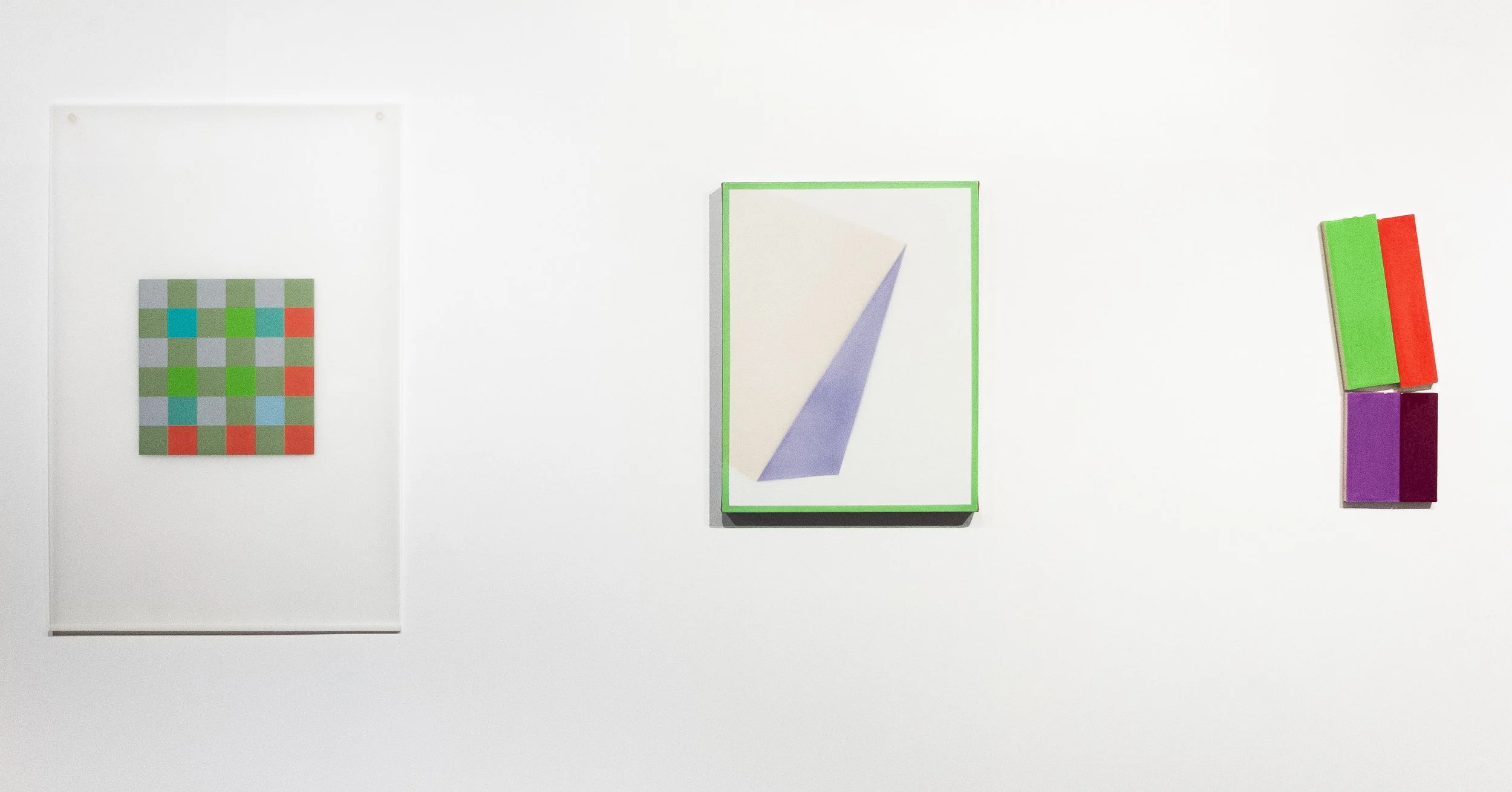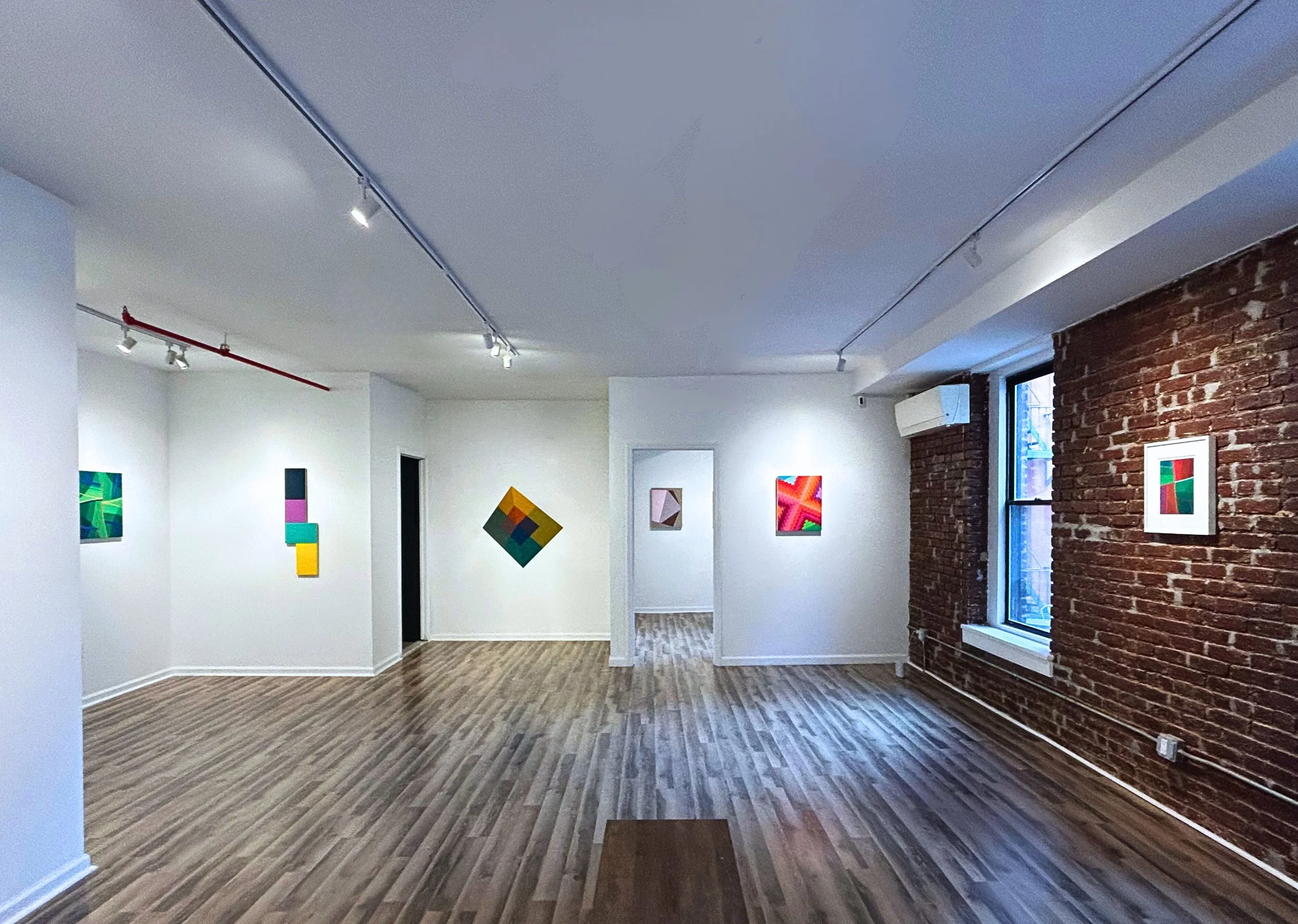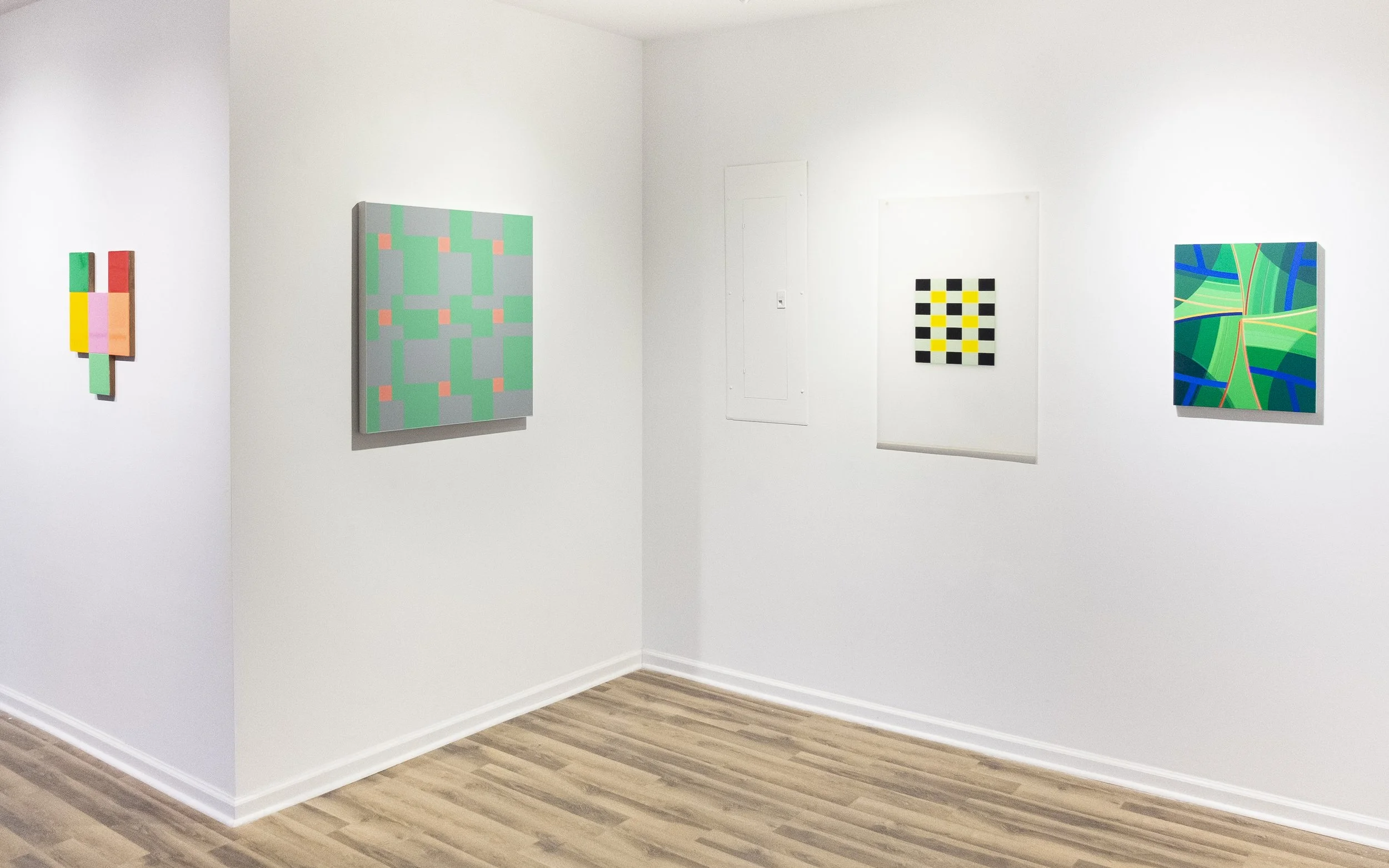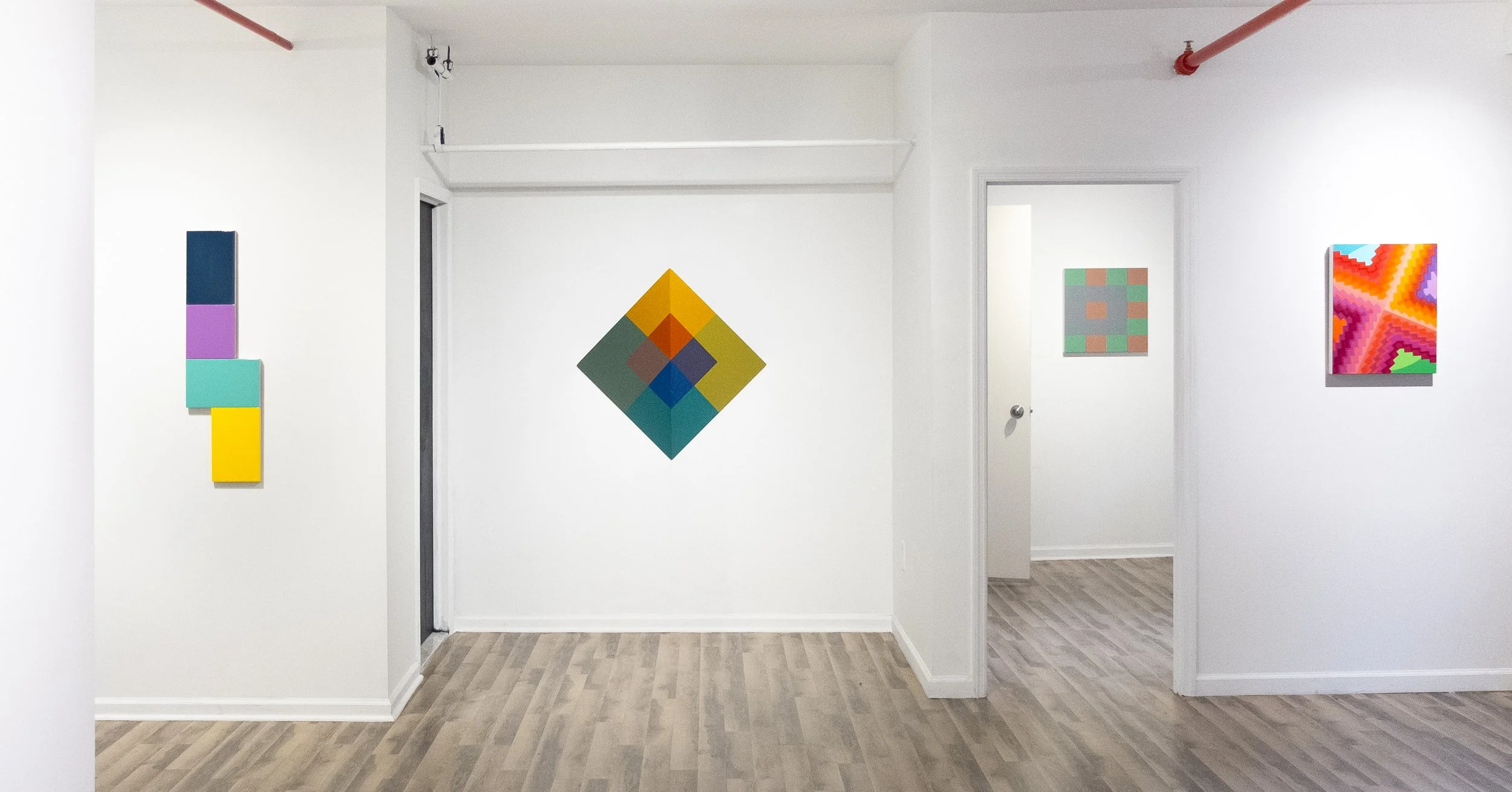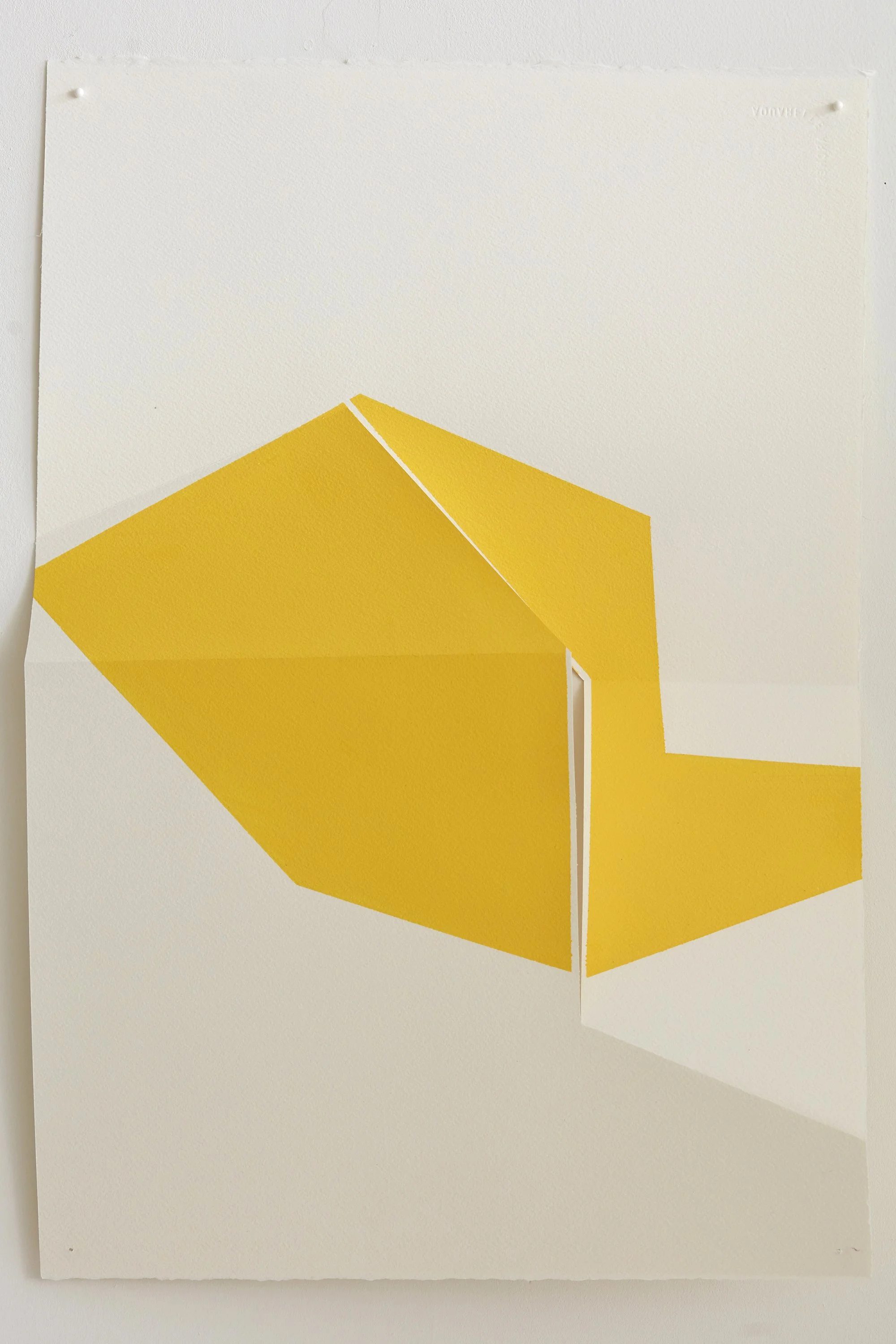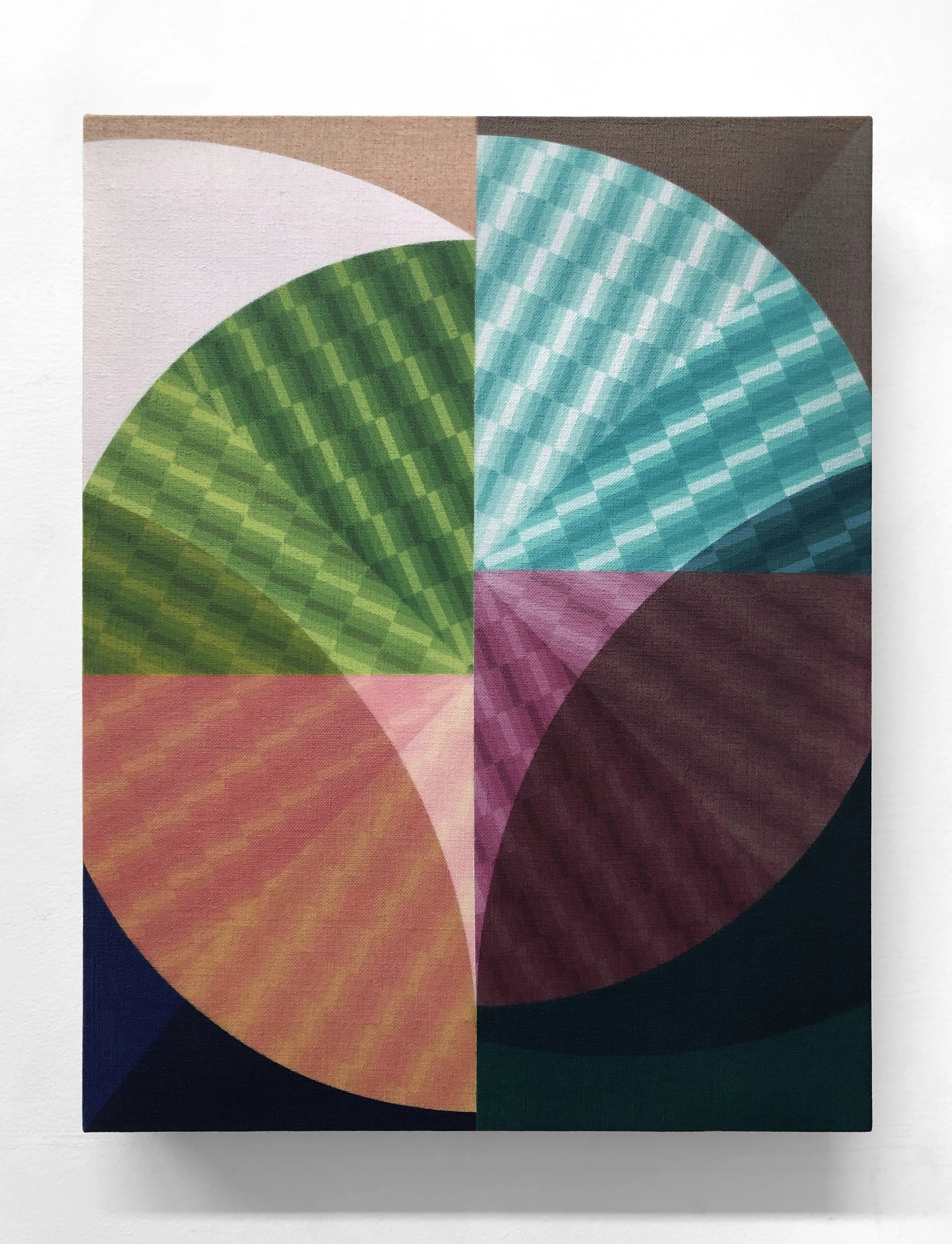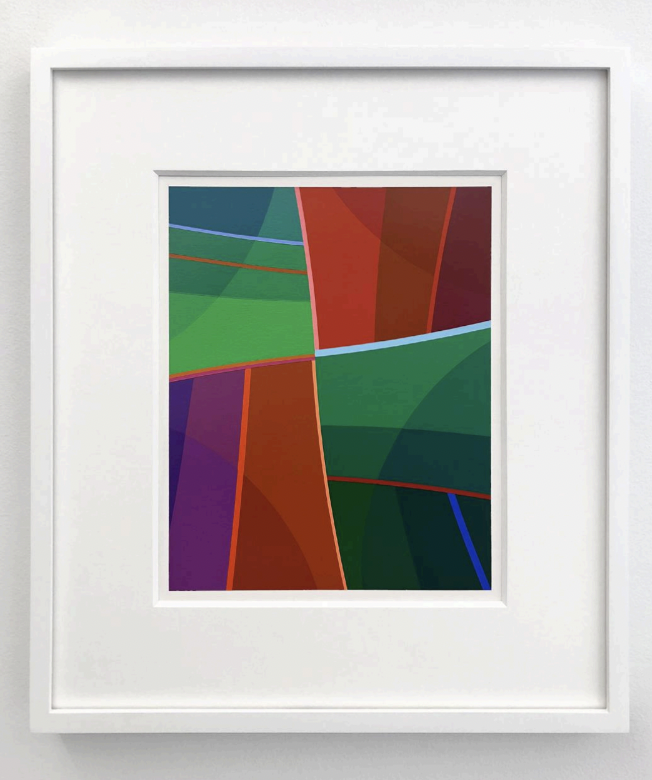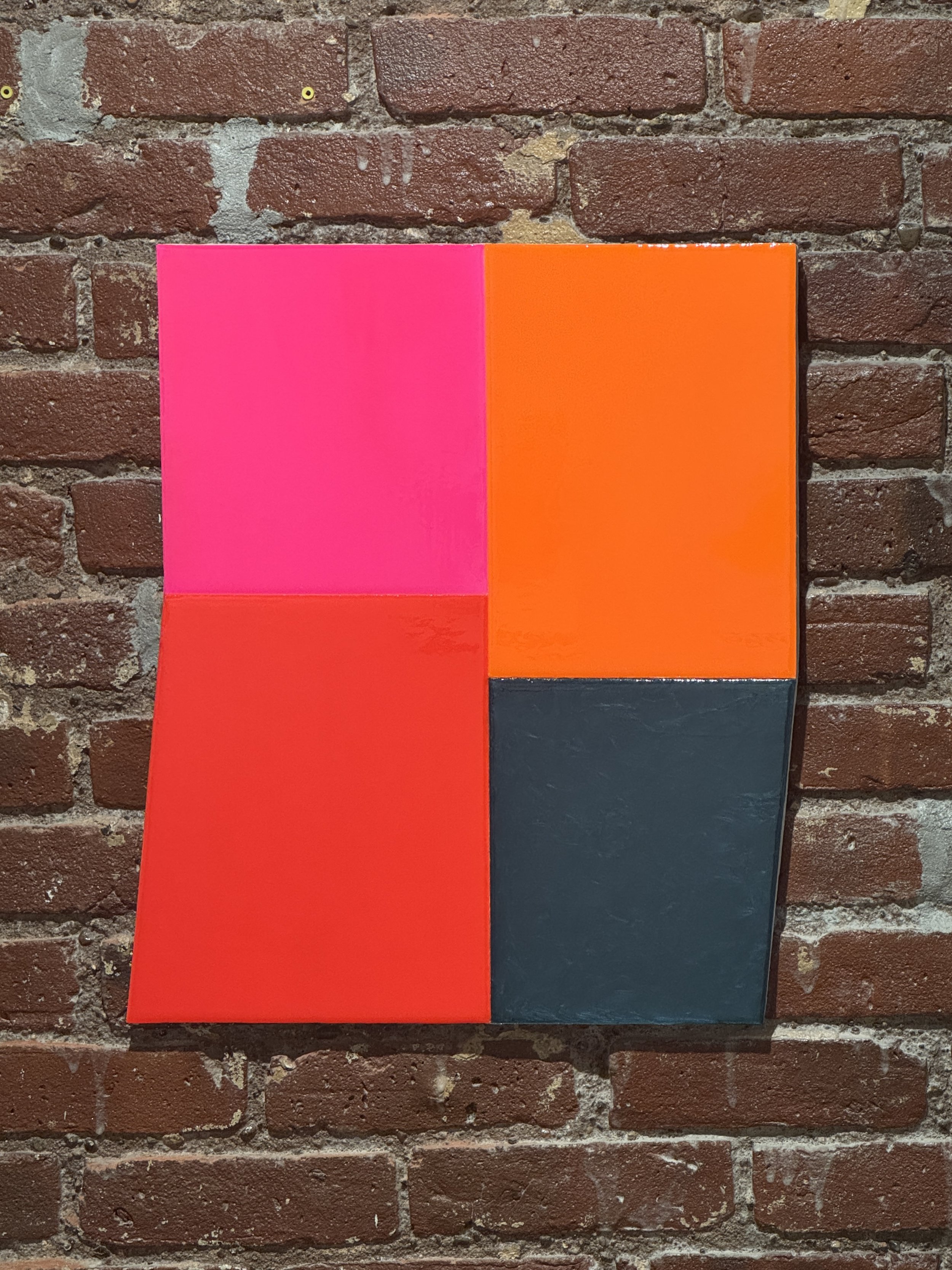Pattern Space brings together four artists—Jacob Cartwright, Victoria Palermo, Daniel G. Hill, and Sonita Singwi—whose practices converge around questions of structure, visual movement, and spatial logic. Across painting and sculpture, geometry becomes both a framework and a generative force. In this exhibition, pattern, folded planes and intersecting geometries create a field where precision and intuition coexist. Forms hinge, balance, and expand, revealing the quiet mechanics that shape perception. Through shifts in proportion, rhythm, and light, abstraction becomes a system in motion—its order provisional, its equilibrium continually redefined. Rather than fixing meaning, Pattern Space invites the viewer to engage with the active structures that govern visual experience. Each work, distinct in material and approach, contributes to an evolving dialogue about how we measure, construct, and inhabit space through the language of abstraction.
